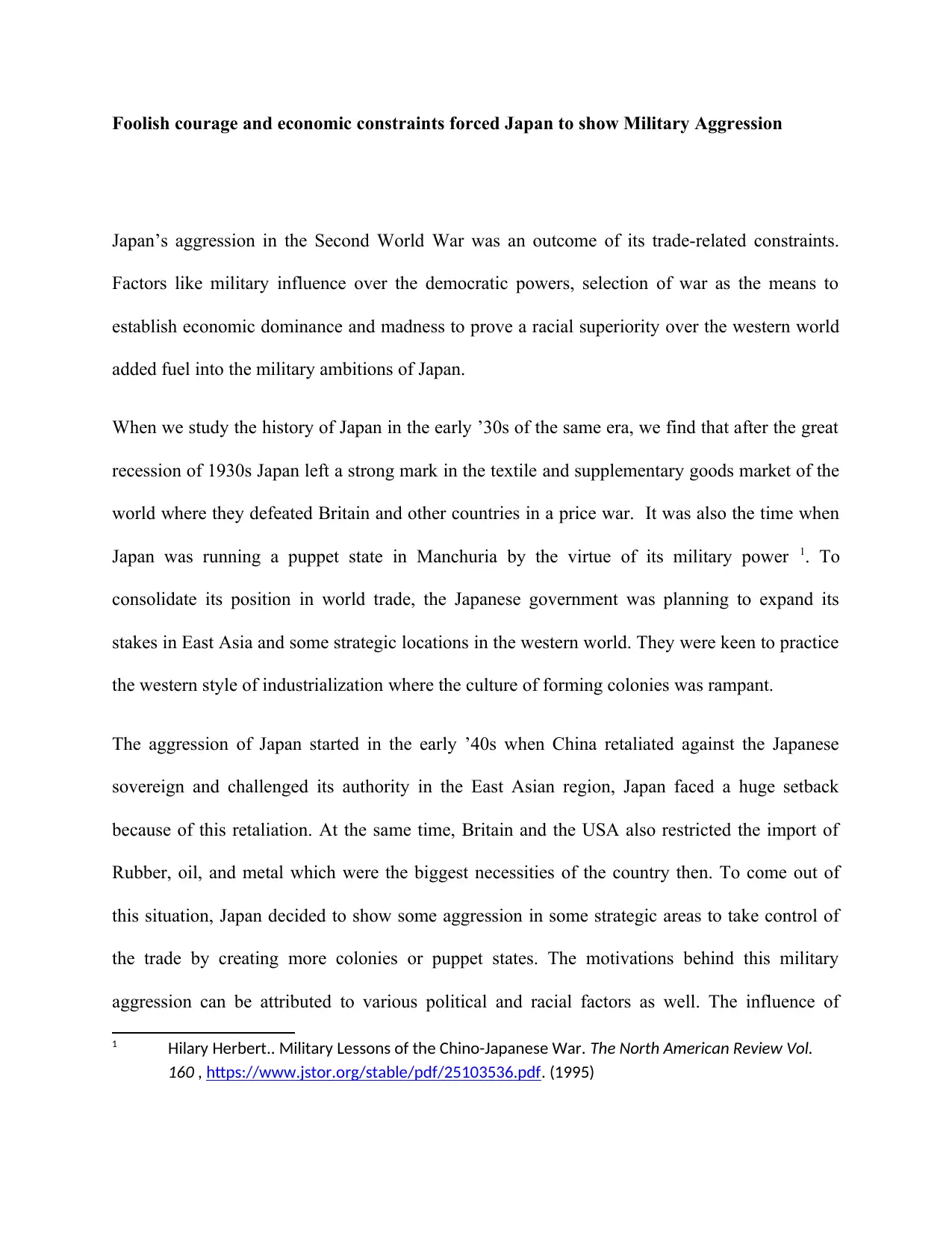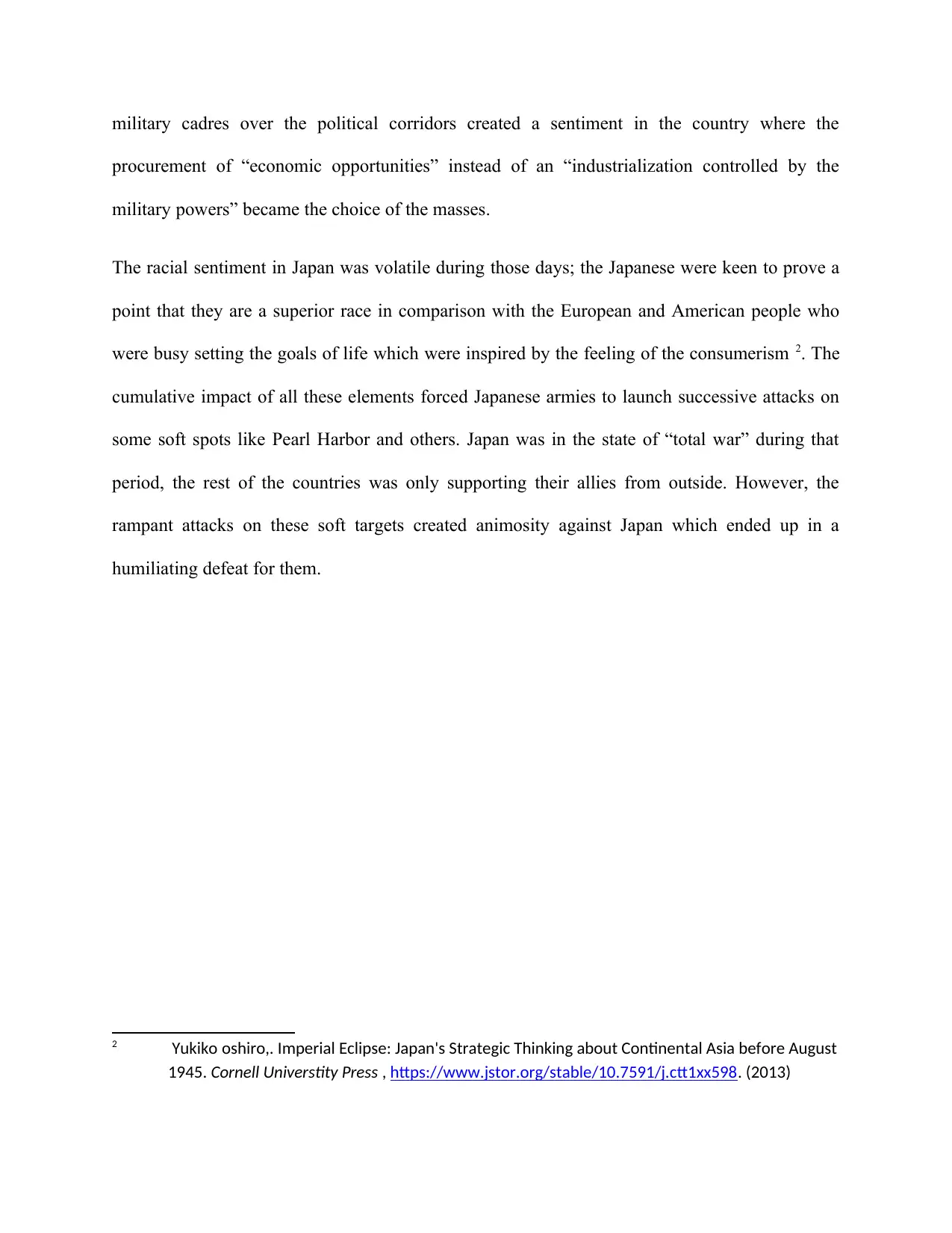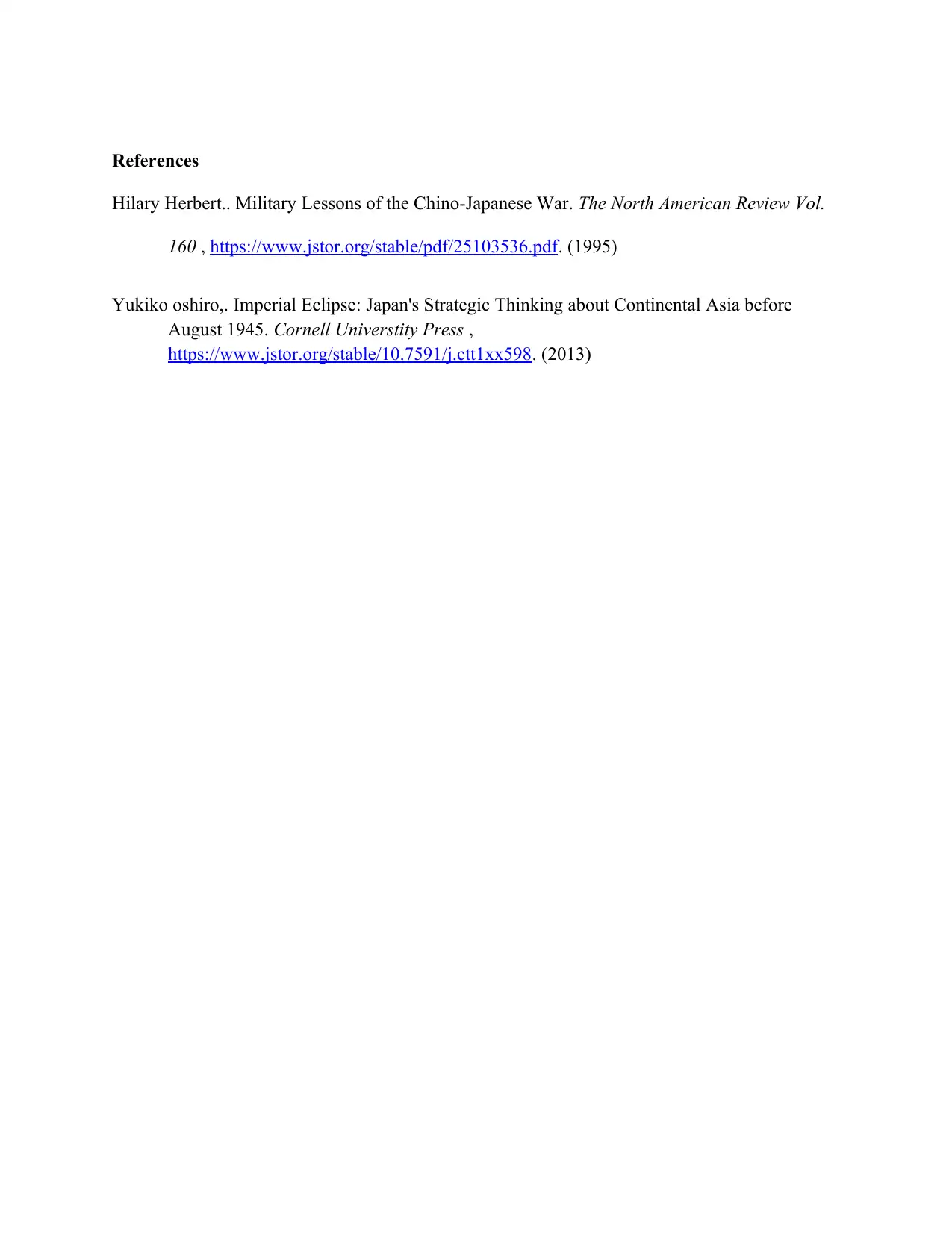Economic and Political Causes of Japanese Aggression in World War II
VerifiedAdded on 2022/09/18
|3
|603
|23
Essay
AI Summary
This essay delves into the multifaceted causes of Japan's aggression during World War II. It examines the economic constraints, particularly the impact of the 1930s recession and subsequent trade restrictions, which fueled Japan's expansionist ambitions. The influence of the military on political decisions, the desire to establish economic dominance, and the belief in racial superiority are also explored as critical factors. The essay discusses Japan's strategic moves, including the establishment of a puppet state in Manchuria and its subsequent aggression in East Asia, highlighting the role of resource control and the pursuit of colonial expansion. The essay also examines the role of racial sentiments in Japan, the aggressive actions towards the USA and the ultimate defeat of Japan. The essay uses references to support the claims.
1 out of 3




![[object Object]](/_next/static/media/star-bottom.7253800d.svg)